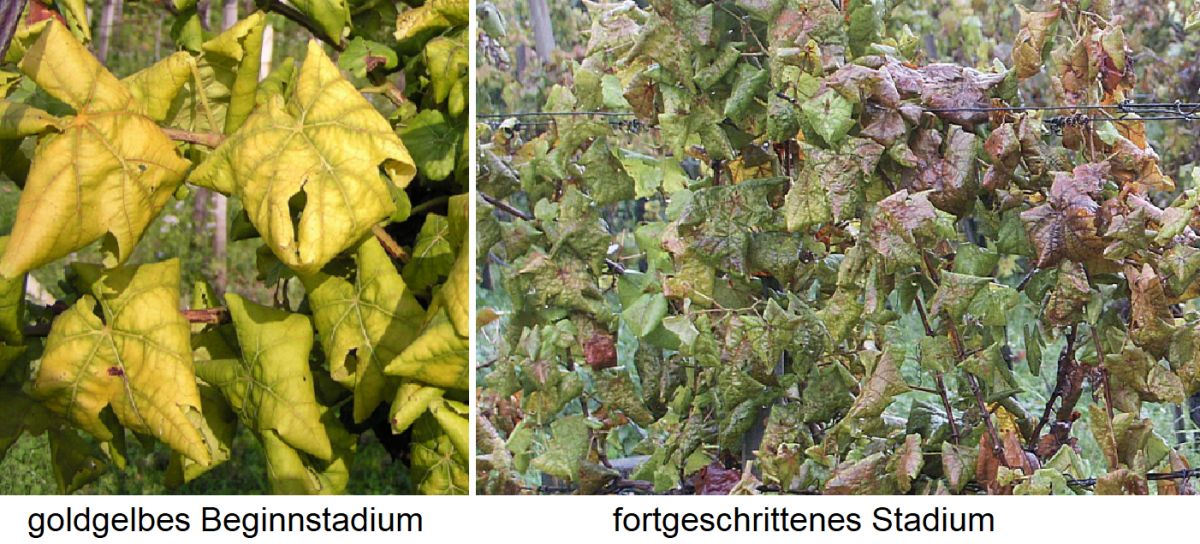Phytoplasma-transmitting cicada species (also Scaphoideus littoralis); see under Flavescence dorée.
Flavescence dorée
Also known as "grapevine flavescence dorée phytoplasma", this relatively new vine disease was probably introduced to Europe in the 1940s from eastern North America in the Great Lakes region. It first appeared here on a massive scale in the early 1950s in France-Armagnac and then spread epidemically across southern France, Italy and Spain. Corsica was hit particularly hard because grape varieties particularly susceptible to the disease are cultivated here. It seems to be favoured in warmer regions, and the strong spread may also be due to climate change. Individual observations with similar symptoms have also been made in Germany.

Causative agent
The disease is caused by phytoplasmas (bacteria-like microorganisms), which are also the causative agents of Dutch elm yellows. The pathogens are presumably transmitted by at least two species of cicada (American vine cicada and Oriental cicada). The larvae usually remain on the same vine and stay on the undersides of the...
Voices of our members

There is a vast number of sources on the web where one can acquire knowledge about wine. But none has the scope, timeliness and accuracy of the information in the encyclopaedia at wein.plus. I use it regularly and rely on it.
Sigi Hiss
freier Autor und Weinberater (Fine, Vinum u.a.), Bad Krozingen